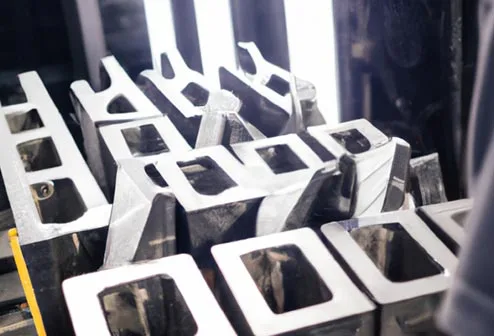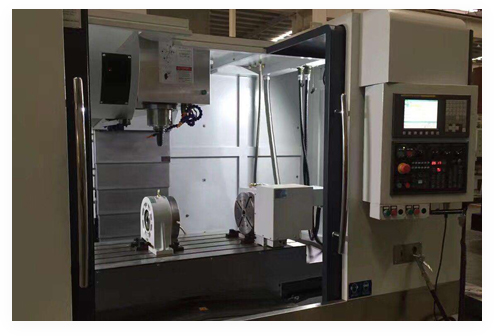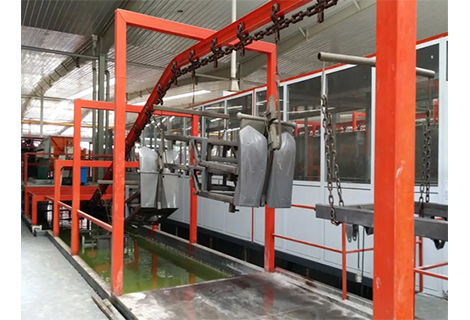As industrial designers, it is important to ensure that the aesthetics of our products are not compromised by exposed fasteners. However, we also need to consider the efficient production of high-quality parts. This may seem like a paradox, but snap fit design can provide a solution. Using snap fit joints in part design can save time and money in production. This design approach reduces material costs, and the number of parts needed, and improves ease of assembly. To fully leverage the benefits of snap fit design, it is crucial to understand how it interacts with manufacturing systems. Let’s dive into an in-depth overview of snap fits!
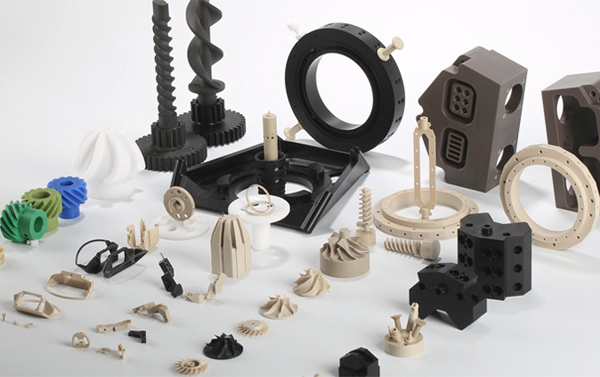
Snap-fit joints are a simple and efficient method of assembling parts. They eliminate the need for additional fasteners and tools. A snap joint typically consists of a small protrusion, such as a stud, hook, or bead, that deflects during assembly.
The main purpose of a snap joint is to catch a feature in the mating component, allowing for easy connection. Users usually don't need to access the snap-fit joints before assembly, which makes the design process more automated. The design of the snap joint determines whether the connection is permanent or temporary, based on whether it can be released with tools or force.
In injection molding snap fit, an important consideration is the displacement of flexible features during assembly and disassembly. Snap joints are commonly used in plastic parts, and the flexibility of plastic materials allows for reasonable strain and elasticity. This means that large deflections can occur without damaging the parts.
When joined, snap fits are usually not under load and experience minimal displacement, making them suitable for plastic materials. However, stressed plastics may experience creep, which can cause a loss of pretension over time.
To prevent displacement and release of the fit from the joint, stiff locator elements, such as catches, recesses, and lugs, are used to align the joining parts.
The most common materials used for snap fit joints are plastics, such as ABS (acrylonitrile butadiene styrene), PETG (polyethylene terephthalate glycol), Nylon, and PLA (polylactic acid). These materials are popular because they are lightweight, flexible, and can be easily molded to create the desired snap fit design.
There is a wide range of snap fit design options available. Here are the three most frequent types of snap fit joints in this section.
Annular Snap Joints
The annular snap joints are common in the design of elliptic or circular parts. This type of snap fit joint involves a ridge on one component that locks into a groove on the second component. During assembly, there may be bending as well as tensile or compressive hoop stresses that need to be considered. Designing a joint with annular snap fits can be challenging due to the presence of multiaxial stresses. The strain of simple circular geometries can be estimated based on the diameters of the joining components. One important property of annular snap fits is the compression and stretching of the circumference. It is important to note that the circular arrangement of hooks should not be confused with an annular snap fit design, as the deflection in annular fits is bending-dominated. The properties of annular snap fits can vary depending on the design of the joining components. They can be easily locked and released, as seen in pen caps. Some annular snap fits may provide a permanent, non-releasing connection, depending on the angles of the joining components. However, rotation may be permitted in both situations.
Cantilever Snap Joints
Cantilever snap joints have a simple geometric design, typically consisting of a cantilever beam with a tapered hook at its tip and a matching recess in the joining partner. The tapered surface of the hook slides along the joining partner's surface, bending the cantilever and allowing the hook to reach the recess before snapping back into its undeformed state. These joints can be permanent or support release at a certain separation force, depending on the angle between the hook and recess surfaces. In some cases, the cantilever may have a U-shape or L-shape, which is common in plastic parts. These designs allow for longer cantilevers without taking up more space and can reduce deflection forces in compact environments.
Torsion Snap Joints
Torsion snap joints, on the other hand, deflect beams by twisting a bar. They are a simple and robust method for creating separable connections. The design typically includes a rocker arm and a torsion bar that is integrally molded for optimal connectivity. When the beam's free end is pushed, it lifts the hook and releases the joint through a seesaw mechanism created by extending the hook's beam beyond the torsion bar axis.
Snap fit joints offer a multitude of advantages that make them highly valued in product design across various industries. Here is a brief overview of their key benefits:
1. Easy Assembly/Disassembly
Snap fittings are incredibly user-friendly. They can be easily attached or detached within seconds, eliminating the need for specialized tools like screwdrivers.
2. No Extra Hardware Needed
Unlike many other mechanical joints, snap joints do not require additional hardware such as nuts, washers, or screws to connect components. The snap fitting itself is sufficient to create a strong mechanical joint.
3. Reliable and Long Service Life
With proper usage, snap fits can provide exceptional longevity. They have the potential to last for many years without contributing to the failure of the product.
4. Enhanced Aesthetics
Traditional mechanical fasteners can detract from a product's appearance, especially when they are visible. For instance, aerospace products often feature numerous visible fasteners. In contrast, snap fit joints are predominantly hidden from view, allowing for a more seamless and aesthetically pleasing design.
Complex Production Process
The production process for snapfit joints is complex due to their interlocking features and stress concentration regions. The design of the mold requires undercuts for locking clips, which adds complexity and cost. Additionally, extra care and time are needed to prevent over-extending the joints during ejection from the mold.
Easy to Break
Snap fittings are prone to breakage under slight over-loading. While they are long-lasting, their flexibility makes them easy to break.
Weaker than Permanent Joints
Furthermore, snap joints are weaker compared to permanent joints such as screws, nuts, and bolts. Although this is not a fair comparison as snap fit joints serve specific purposes, it is worth mentioning.
Despite these limitations, snap fit joints have a wide range of applications and can be combined with different types of fits to meet industry standards and specific design requirements. This versatility allows for diverse examples of plastic snap fit designs. Some common applications include snap fasteners for fitting parts together, pen caps using annular snap fits to tightly grip pens, bag latches for managing full trekking bags, and Tupperware lids with snap fittings that create durable and airtight joints.

Snap fit joints are a popular design choice due to their durability and efficiency. However, they can encounter common issues that may lead to failure. To ensure the success of snap fittings, it is important to address these issues during the design and use of snap fit joints.
One common issue is stress concentration. This occurs when a small section of the snap fitting bears a significantly heavier load than other parts. If the stresses in these areas exceed the material's strength limits, the structure can fail. Stress concentrations are common in snap joints due to their flexible nature and the presence of curves and turns in their geometry, which can create areas prone to high stresses.
Another issue is creep. Creep is a phenomenon where a material weakens over time when placed under prolonged stress. Since snap fits remain loaded for extended periods, they can experience creep, which may compromise their structural integrity.
Fatigue is also a concern for snap fit joints. Fatigue refers to the weakening of a structure due to repeated cyclic loading. Snap fit joints can experience fatigue failure as a result of frequent assembling and disassembling.
Additionally, environmental conditions can affect the performance of snap fit joints. High temperatures, chemical exposure, and humidity can all contribute to the deterioration of snap fit joints.
To avoid these common issues, it is important to consider them during the design stage and choose materials and geometries that minimize stress concentrations. Regular maintenance and monitoring of snap fit joints are also necessary to prevent fatigue and ensure their longevity. Furthermore, taking environmental factors into account and providing appropriate protection can help mitigate any potential deterioration caused by external conditions.
To ensure the durability and effectiveness of snap fit joints, there are several recommended design practices to follow:
1. Fillet the Base of the Cantilever
Adding a fillet at the base of the cantilever helps distribute stress evenly and create a stronger connection. It is recommended to have a fillet radius that is at least 0.5 times the thickness of the cantilever base.
2. Taper the Design
It is good design practice to decrease the cross-section of the cantilever beam along its length. This reduces the amount of material required and ensures a more even distribution of stress.
3. Increase the Width of the Clip
Increasing the width of the clip adds strength to the snap fit design. The optimal clip width may require some trial and error to achieve the desired level of stiffness, but it is recommended to have a width of at least 5mm.
4. Consider Adding Lugs
Including lugs in the assembly helps align the parts and transfers some shear force from the clips.
5. Consider the Build Direction
It is advisable to avoid designing snap joints that are built vertically upwards from the bed. This orientation is typically weaker due to the anisotropic nature of the process. The cantilever or other snap fits should only be deflected during assembly and not during component connection.
Snap fits offer manufacturers cost and performance utility. However, snap fit design can be a complex and iterative process. Therefore, you only need to follow some simple manufacturing best practices to get the best out of your snap fit joints. This will further decrease prototyping life cycles.
Richconn is your go-to for all snap fit design solutions! We boast of engineers who are specialists in relevant processes and technologies. High-quality services are certain when you choose Richconn. Richconn understands the importance of time, which is why we use the best machine and strive to send your products to you as quickly as possible. We also provide a cost-effective production process as the cost of material and feature expenses are considerably lower. All you have to contact us for an instant quote.
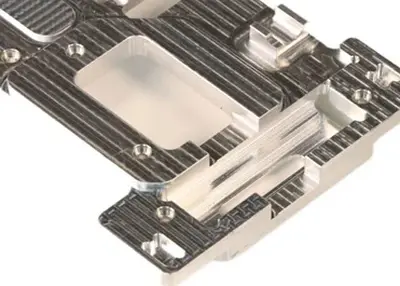 What Is CNC Machining? The Basic Information You Need to KnowMarch 27, 2024What is CNC machining? Here is the basic information that you must know, such as its advantages, disadvantages, applications, and so on.view
What Is CNC Machining? The Basic Information You Need to KnowMarch 27, 2024What is CNC machining? Here is the basic information that you must know, such as its advantages, disadvantages, applications, and so on.view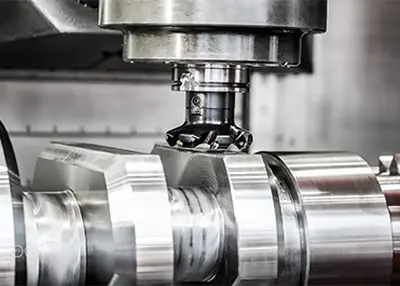 Understanding and Improving Modern CNC MillingOctober 11, 2023CNC MillingCNC milling has been around for more than 50 years, but the technology continues to evolve. Recent advances have made it possible to automate the entire process, from design to finished par...view
Understanding and Improving Modern CNC MillingOctober 11, 2023CNC MillingCNC milling has been around for more than 50 years, but the technology continues to evolve. Recent advances have made it possible to automate the entire process, from design to finished par...view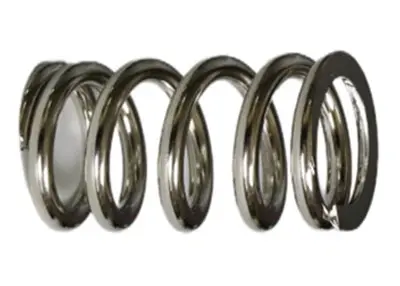 Types of Springs | Guidelines, Spring Types, and ApplicationsOctober 18, 2023Springs play a crucial role in various products, providing motion and shock absorption. This article will show you different types of springs and how to choose the right one.view
Types of Springs | Guidelines, Spring Types, and ApplicationsOctober 18, 2023Springs play a crucial role in various products, providing motion and shock absorption. This article will show you different types of springs and how to choose the right one.view All About CNC Production Machining: Types, Benefits, ApplicationsJuly 11, 2024Enhance your understanding of CNC production machining with our comprehensive insights. Discover the world of CNC production machining: its types, benefits, and must-know points for outsourcing.view
All About CNC Production Machining: Types, Benefits, ApplicationsJuly 11, 2024Enhance your understanding of CNC production machining with our comprehensive insights. Discover the world of CNC production machining: its types, benefits, and must-know points for outsourcing.view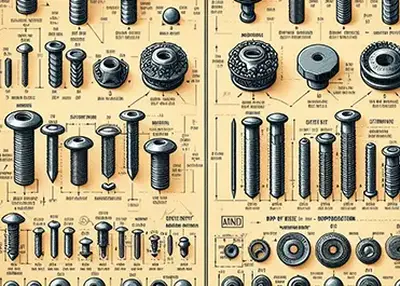 Pop Rivets vs. Blind Rivets: A Comparison of Two Common FastenersNovember 28, 2023Fasteners are devices that are used to join or hold two or more materials or parts together. There are many types and categories of fasteners, such as screws, bolts, nuts, washers, nails, pins, etc.view
Pop Rivets vs. Blind Rivets: A Comparison of Two Common FastenersNovember 28, 2023Fasteners are devices that are used to join or hold two or more materials or parts together. There are many types and categories of fasteners, such as screws, bolts, nuts, washers, nails, pins, etc.view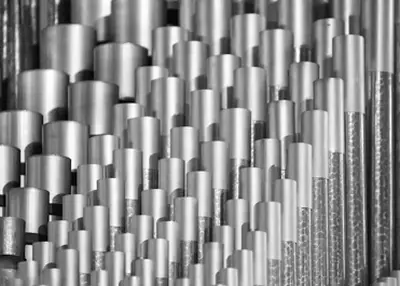 Bead Blasting 101: How Does a Bead Blaster Work?November 2, 2023Bead blasting is an abrasive technique where media is projected onto a surface. How does a bead blaster work to ensure a smooth bead blasting process? Read on.view
Bead Blasting 101: How Does a Bead Blaster Work?November 2, 2023Bead blasting is an abrasive technique where media is projected onto a surface. How does a bead blaster work to ensure a smooth bead blasting process? Read on.view
 EN
EN
 ru
ru 

